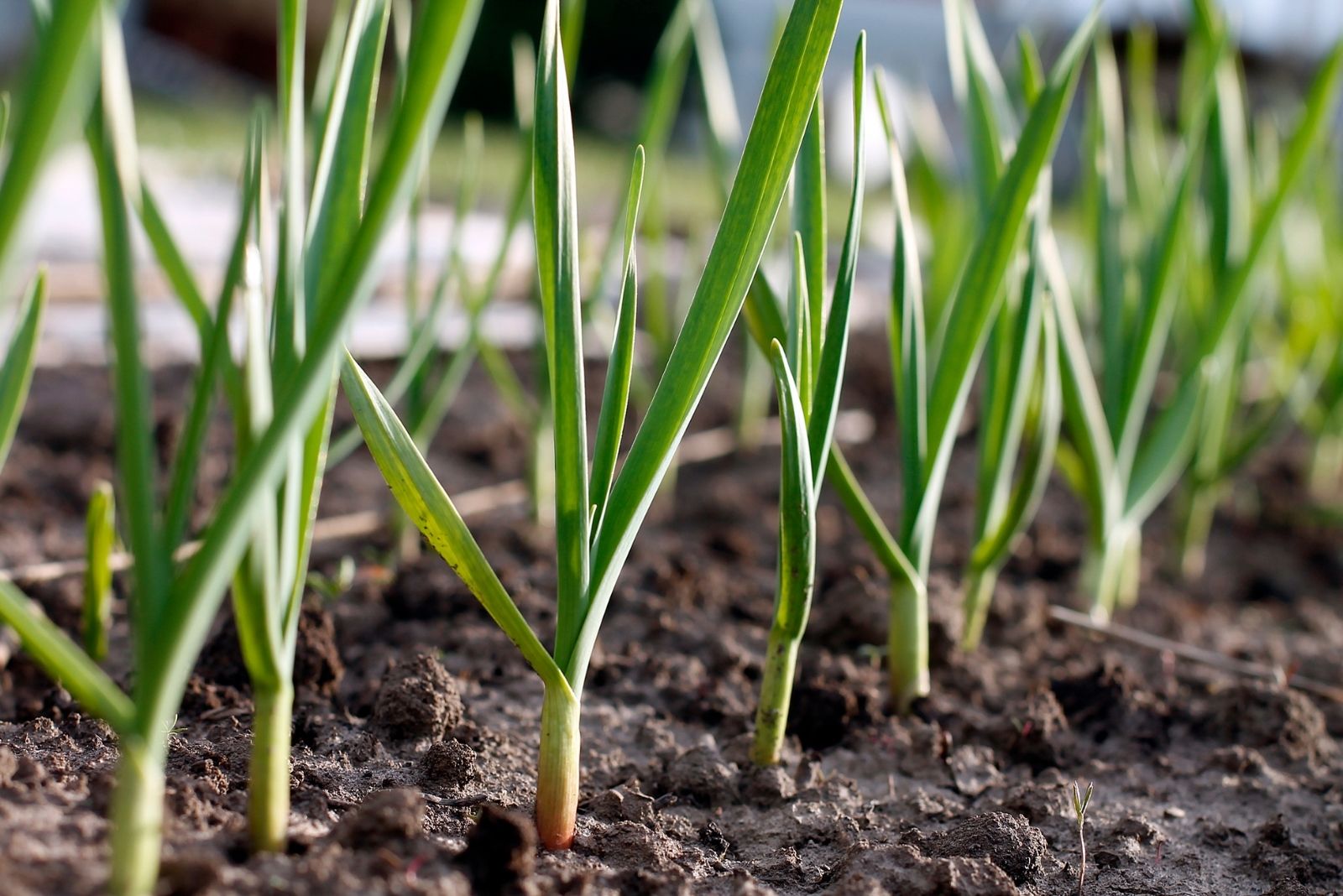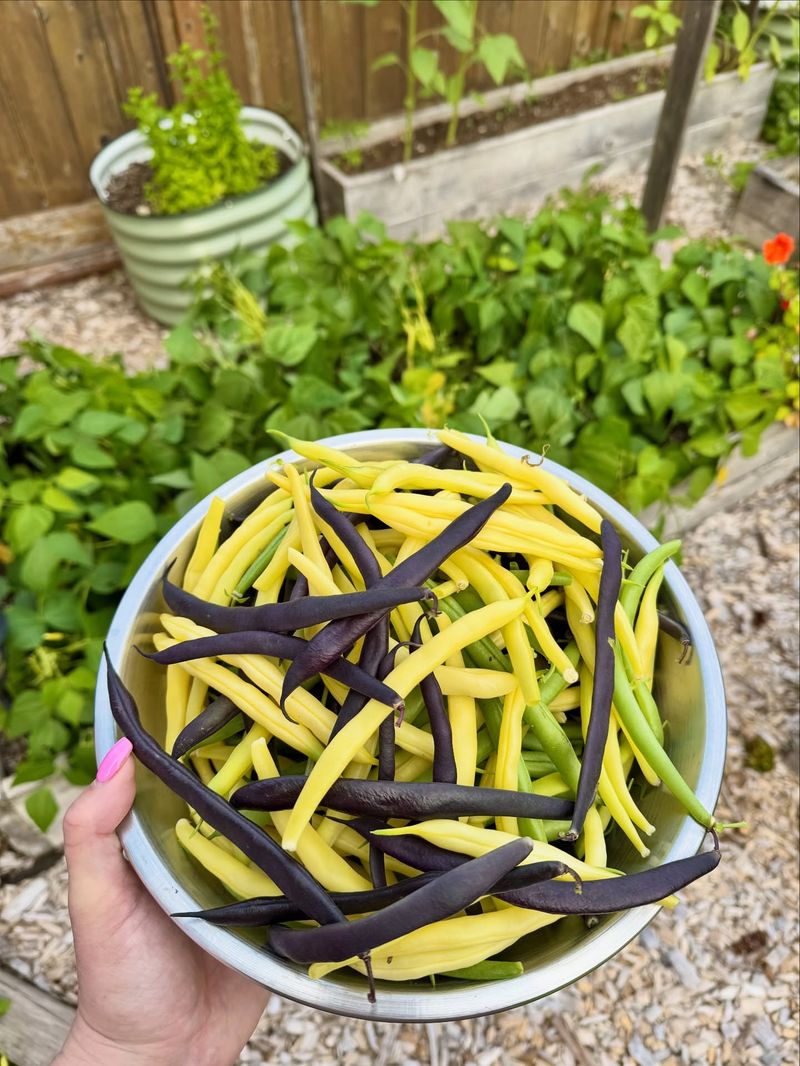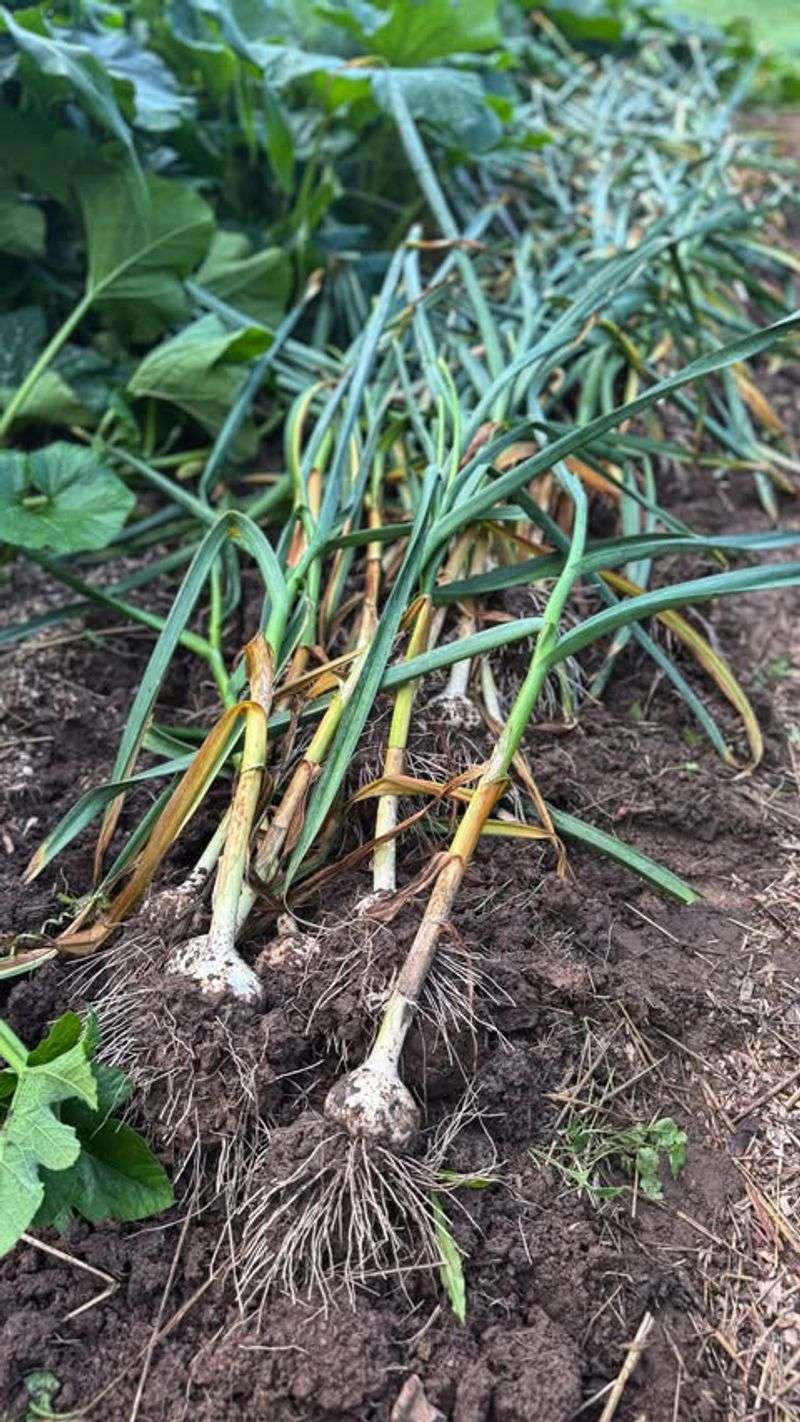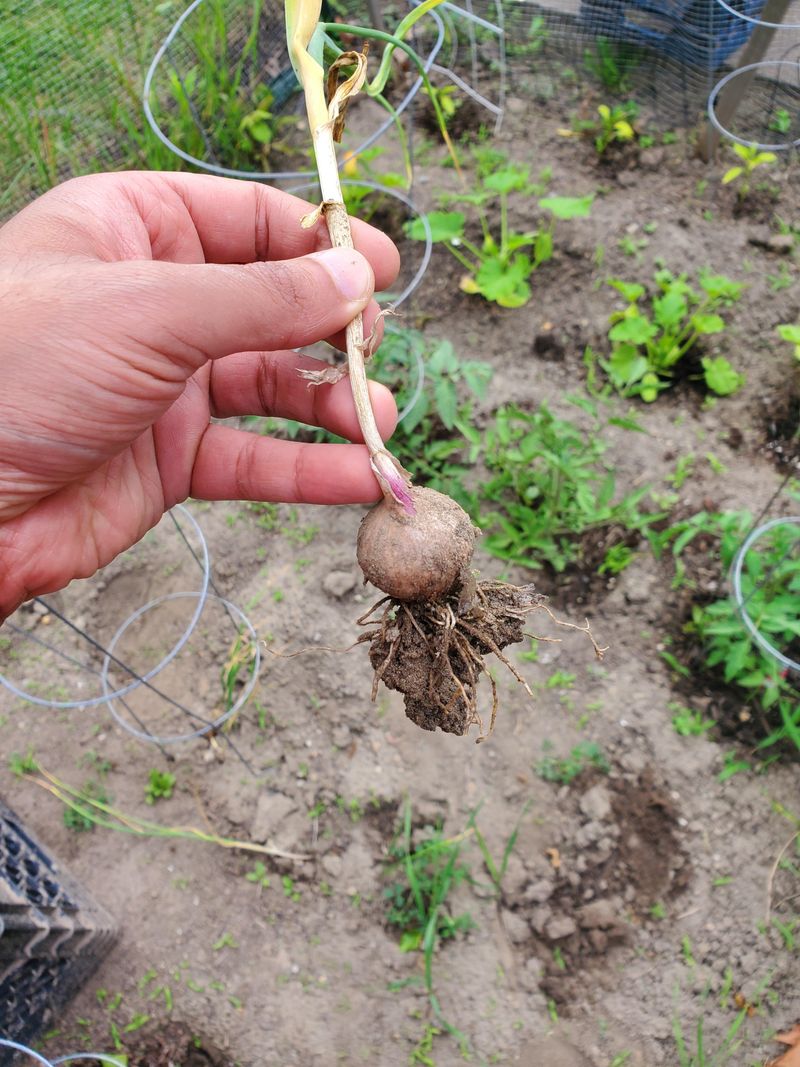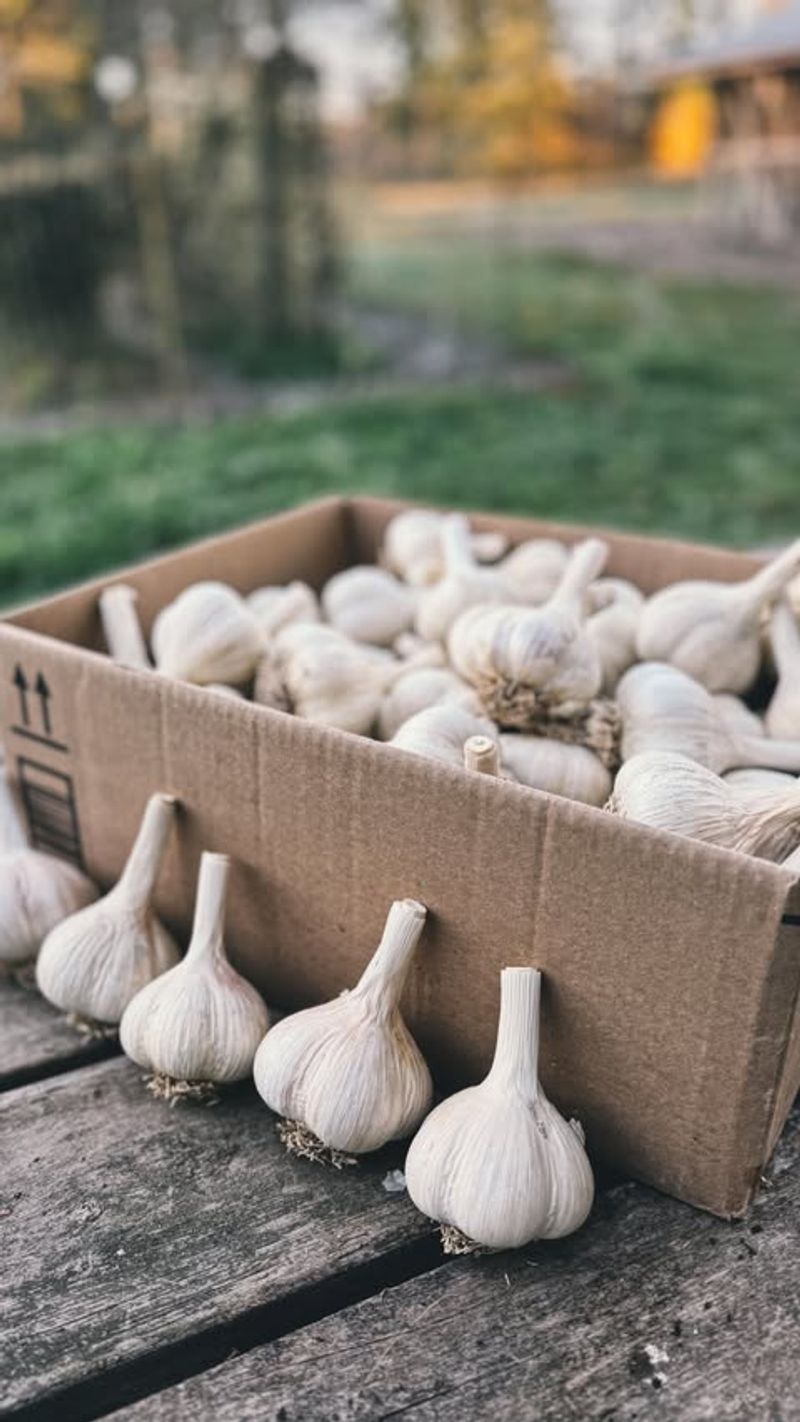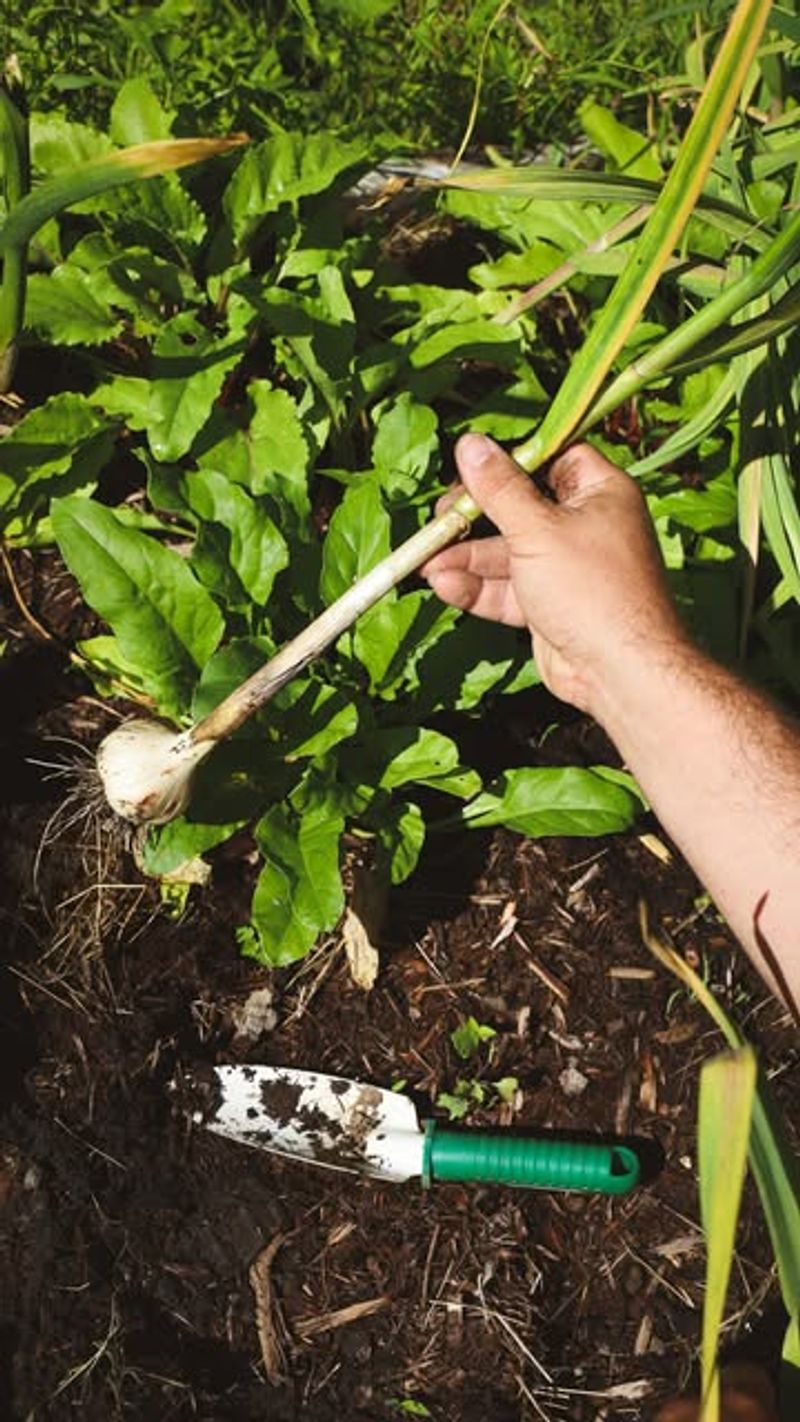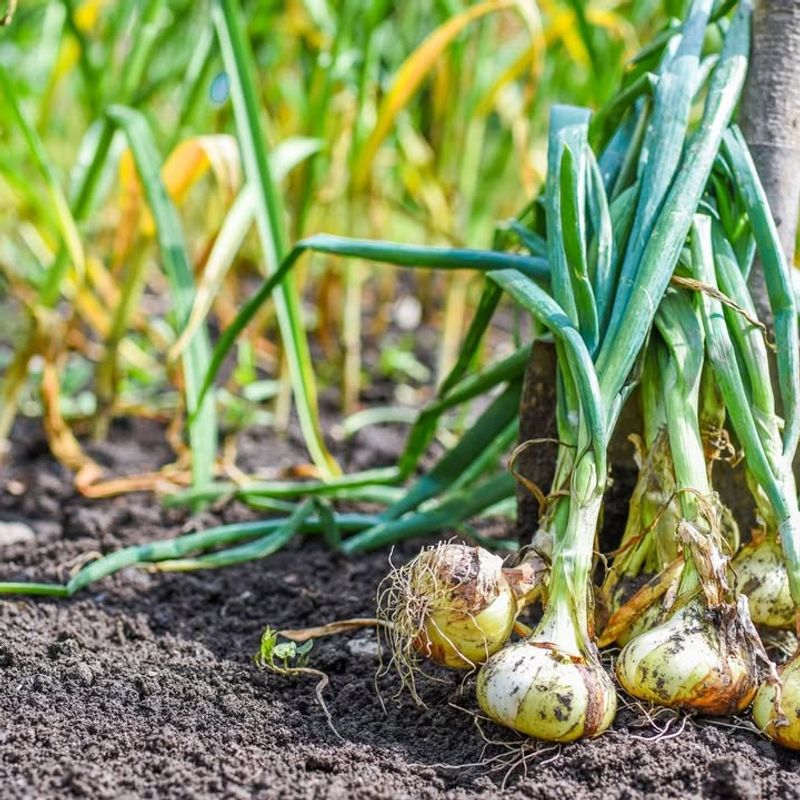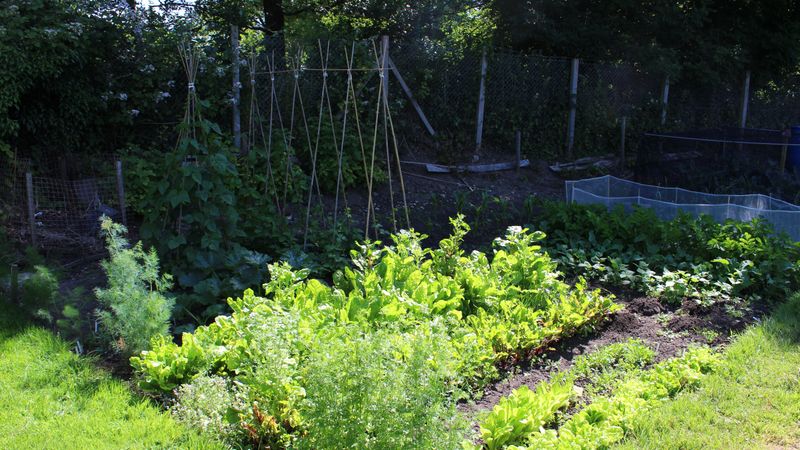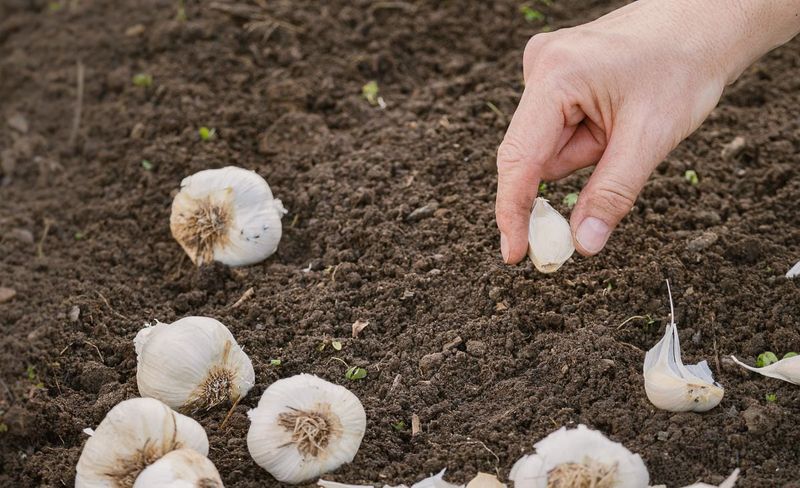Growing garlic in Louisiana comes with unique challenges thanks to our humid summers, unpredictable rainfall, and heavy clay soils. Choosing the wrong spot can lead to stunted bulbs, disease problems, or complete crop failure.
Understanding where not to plant garlic is just as important as knowing the ideal conditions. This guide will help you avoid common placement mistakes and grow healthier, more flavorful garlic in your Louisiana garden.
1. Too Close to Beans and Peas
Planting garlic near legumes like beans and peas creates competition that neither plant benefits from. Legumes fix nitrogen in the soil, which sounds helpful, but garlic actually prefers moderate nitrogen levels and can become overly leafy with stunted bulb development when nitrogen is too high.
In my own Louisiana garden, I learned this the hard way when my garlic produced beautiful green tops but disappointingly small cloves. The roots of beans and peas also spread aggressively, competing for space and moisture that garlic desperately needs during bulb formation in late spring.
Keep these plants in separate beds for better results all around.
2. Underneath Established Trees
Tree roots and garlic simply don’t mix well. Large trees create dense shade that blocks the full sun garlic requires for proper bulb development, and their extensive root systems dominate the soil, stealing water and nutrients before your garlic can access them.
Louisiana’s live oaks and magnolias are especially problematic because their roots spread wide and shallow. Garlic planted beneath them struggles to establish itself and often produces tiny, underdeveloped bulbs that aren’t worth harvesting.
For me, this spot turned out to be a big mistake for garlic. Choose open areas with at least six hours of direct sunlight instead.
3. In Heavy, Poorly Drained Clay Soil
Louisiana’s notorious clay soil holds water like a sponge, creating conditions that garlic absolutely hates. Bulbs sitting in saturated soil quickly develop rot, fungal diseases, and other problems that destroy your crop before harvest time arrives.
Clay also compacts easily, making it difficult for garlic roots to penetrate and for bulbs to expand properly. Without good drainage and air circulation around the roots, you’ll end up with mushy, diseased cloves instead of firm, healthy ones.
Amend clay areas heavily with compost and sand, or better yet, grow garlic in raised beds where you control the soil composition completely.
4. Right Next to Tomatoes and Peppers
While some gardeners swear by garlic as a pest deterrent near tomatoes and peppers, planting them too close creates resource competition that weakens all three crops. These nightshades are heavy feeders that demand lots of nutrients and water, leaving little for your garlic bulbs to thrive.
Tomatoes and peppers also grow tall and bushy, eventually shading out the garlic below them during our long Louisiana growing season. When garlic doesn’t get enough light, bulb formation suffers significantly.
Space them at least two feet apart or plant garlic as a border rather than intermixing them directly.
5. In Low-Lying Areas That Flood
Louisiana’s heavy spring rains and occasional flooding make low spots in your garden a death sentence for garlic. Even a few hours of standing water can suffocate garlic roots and encourage rot that spreads rapidly through your entire planting.
Bulbs need consistent moisture but never waterlogged conditions, especially during the critical bulbing stage in April and May. Low areas that collect runoff from surrounding ground simply can’t provide the well-drained environment garlic demands.
Always choose elevated spots or build raised beds to ensure proper drainage, even during our wettest weather. Your harvest will thank you with plump, healthy bulbs.
6. Directly After Other Alliums
Rotating crops matters tremendously for garlic success, and planting it where onions, shallots, or leeks grew the previous season invites trouble. These allium family members deplete the same soil nutrients and attract the same pests and diseases that target garlic.
Soil-borne pathogens like white rot can persist for years, attacking successive allium crops and devastating your garlic harvest. Following onions with garlic also means your soil lacks the specific nutrients garlic needs most, resulting in weak plants and small bulbs.
Wait at least three years before planting garlic in the same bed where other alliums grew.
7. In Full Shade or Partial Sun
Garlic is a sun-loving crop that absolutely requires full sunlight to produce decent-sized bulbs. Shaded or partially shaded spots might seem cooler and more comfortable during Louisiana’s hot months, but they severely limit photosynthesis and bulb development.
Without at least six to eight hours of direct sunlight daily, garlic plants put all their energy into leaf production while bulbs remain tiny and underdeveloped. Shade also keeps soil too moist and cool, encouraging fungal problems that thrive in our humid climate.
Always select the sunniest spot available in your garden, even if it means dealing with more frequent watering during dry spells.
8. Where Soil pH Is Too High or Too Low
Garlic thrives in slightly acidic to neutral soil, ideally between 6.0 and 7.0 pH. Louisiana soils can vary dramatically depending on your location, with some areas naturally acidic and others more alkaline, and extreme pH levels lock up nutrients garlic needs to grow properly.
When pH strays too far in either direction, your garlic can’t absorb essential minerals like phosphorus and potassium, resulting in yellowing leaves, poor bulb formation, and increased disease susceptibility. Testing your soil before planting saves you from disappointing harvests.
Amend acidic soils with lime or alkaline soils with sulfur to bring pH into the ideal range for garlic.

